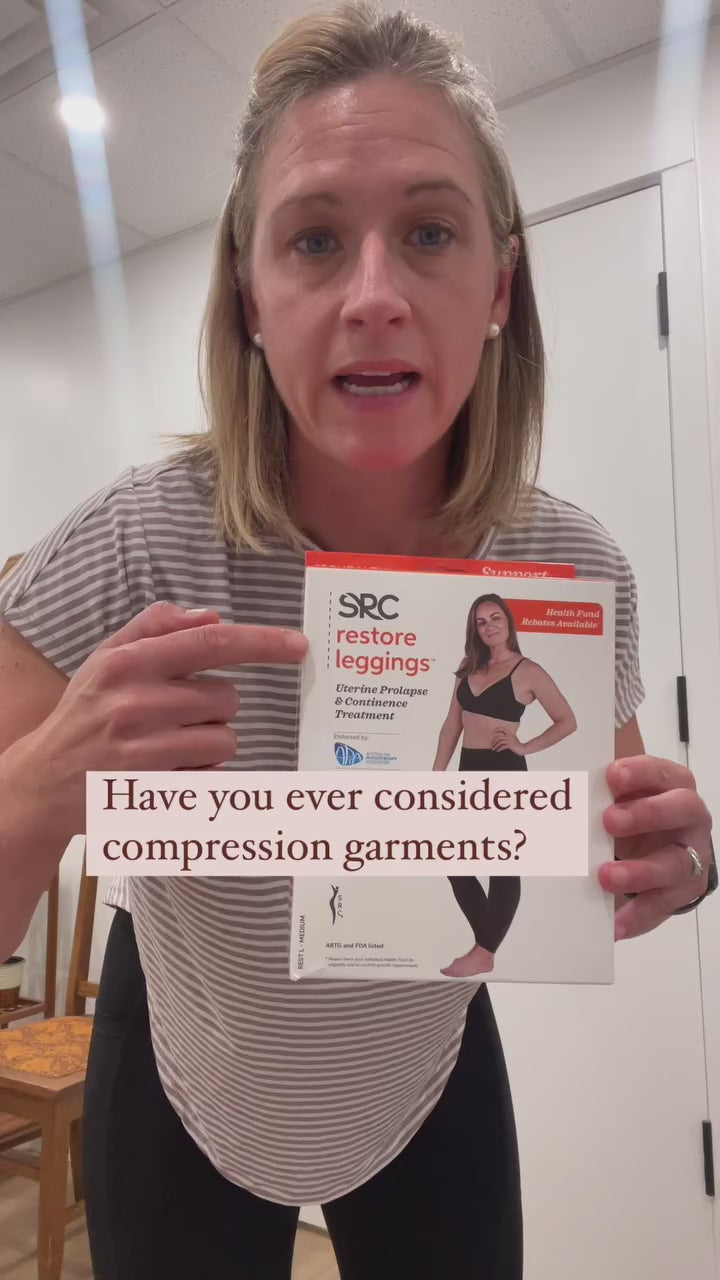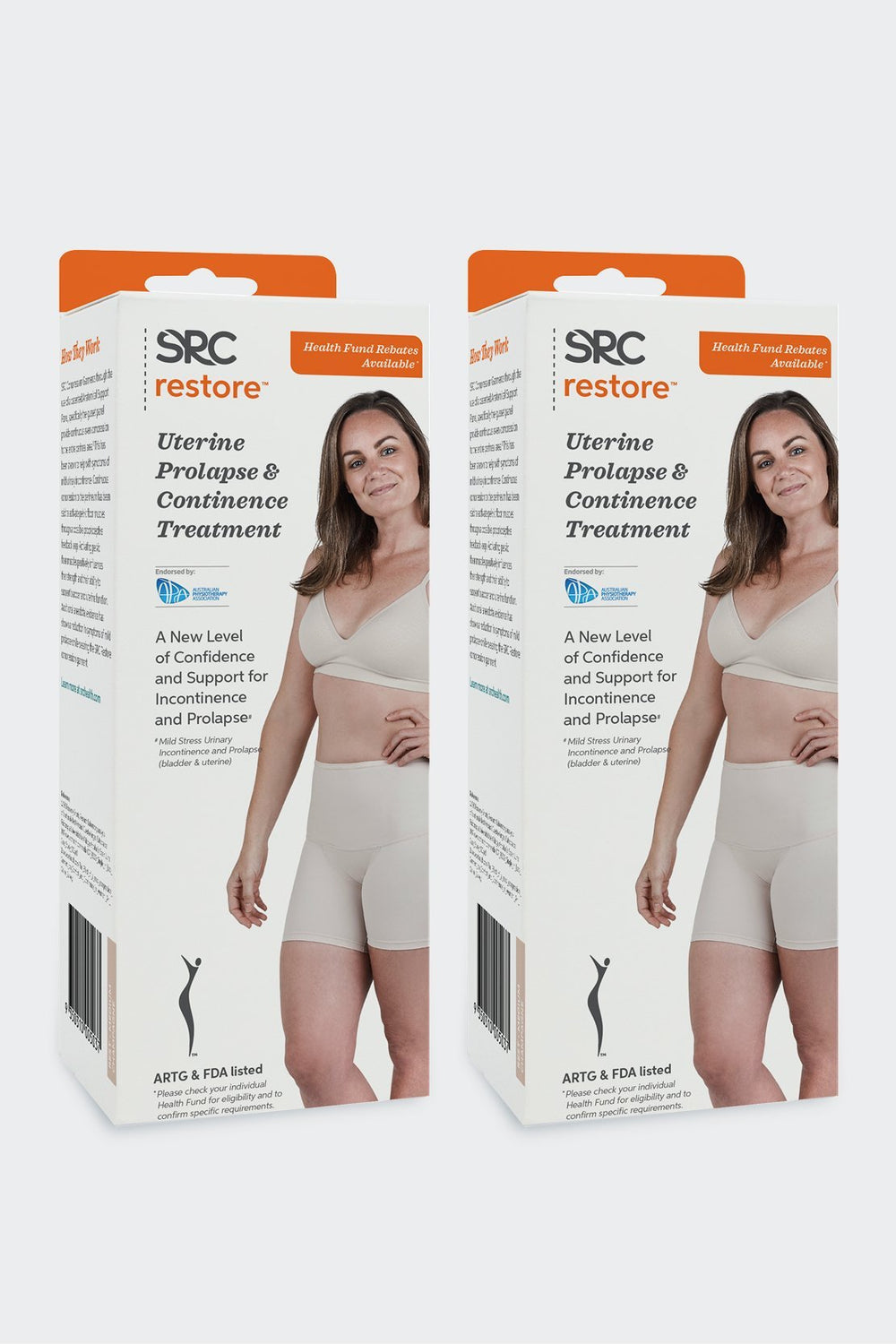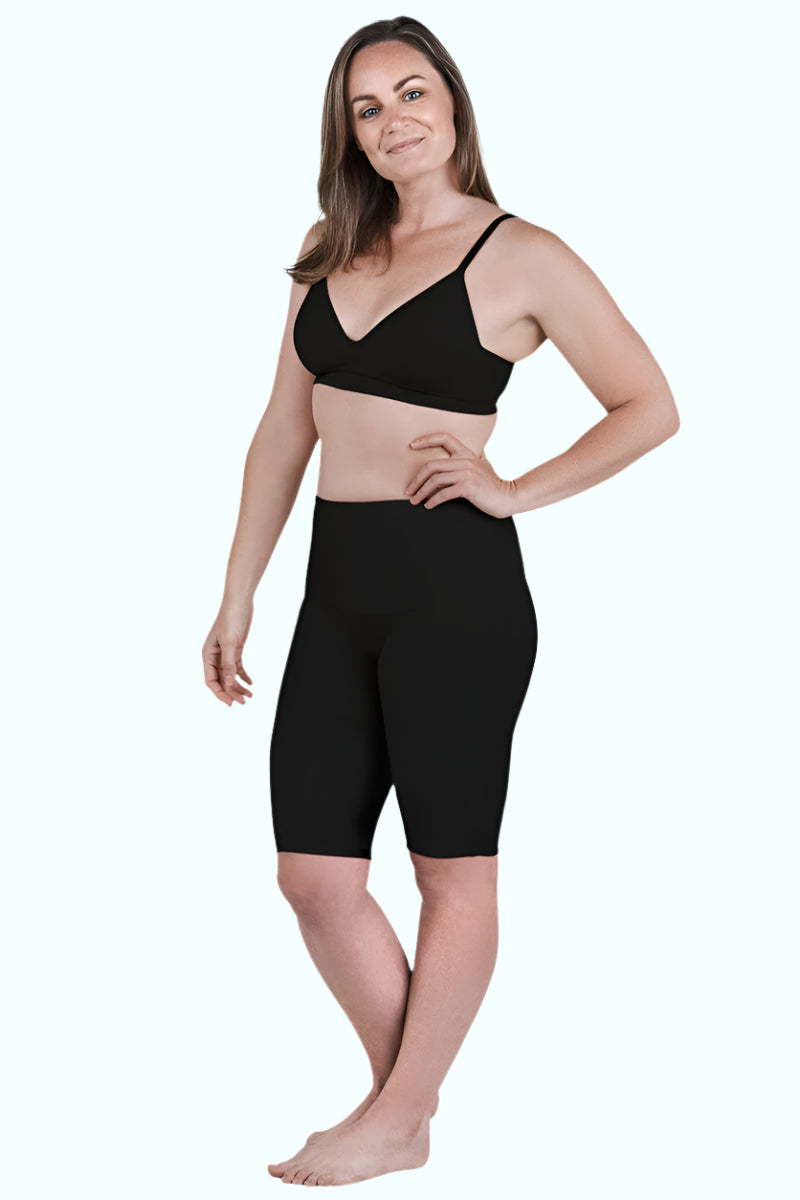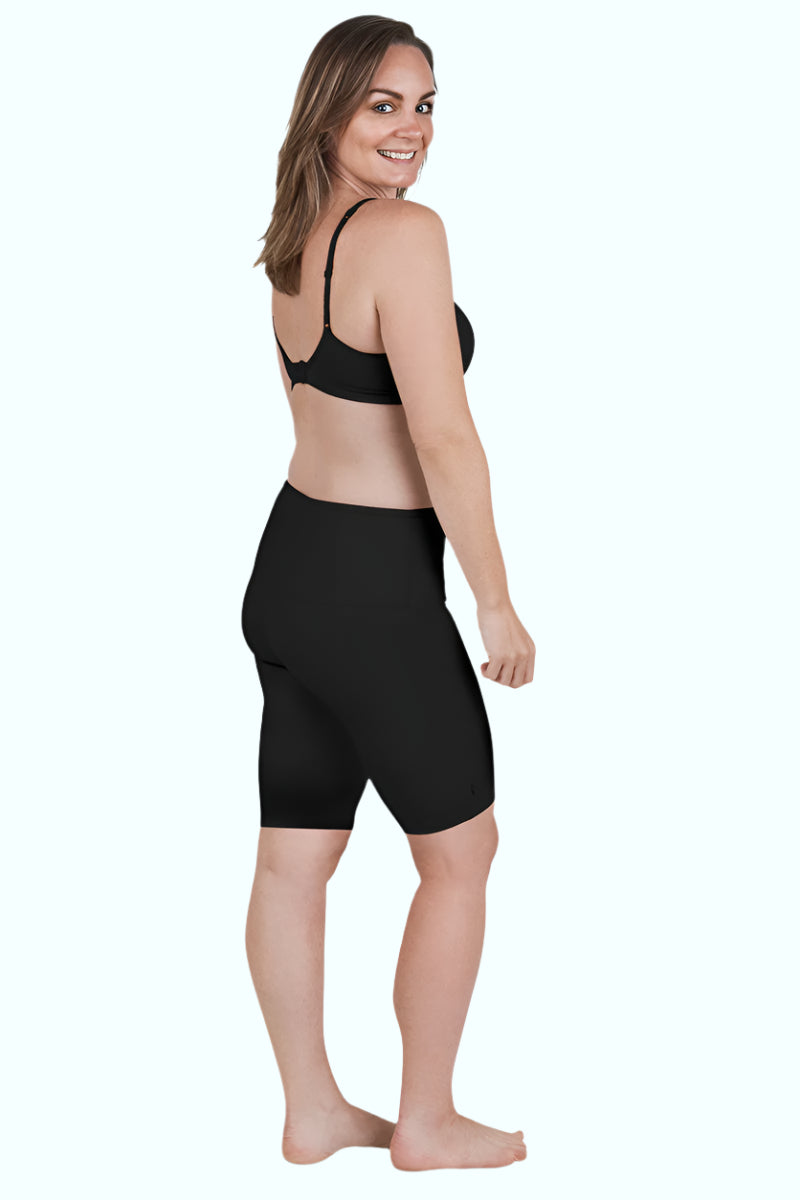Approximate Reading Time: 4 minutes
What is Diastasis Recti?
Defined as a gap of roughly 2.7cm or greater between the two sides of the rectus abdominis muscle that can result in a rounded, protruding belly sometimes referred to as "jelly belly" or "mummy tummy".
It’s important to understand and deal with diastasis recti beyond just the cosmetic reasons. “Looking good” is undoubtedly important as is feeling good about yourself, but it’s even more important because diastasis recti can lead to other health problems if left untreated.
“Diastasis Recti can affect the stability of the trunk and may contribute to pelvic floor dysfunction, back and pelvic pain and hernias. This may be a factor in persistent post-natal lumbar (lower back), pubic symphysis and sacroiliac joint pain and even incontinence due to the interaction of the pelvic floor and abdominal musculature as a stabilising unit" says Shira Kramer, Physiotherapist, founder of Be Active Physio and the Restore Your Core Program.
Because so many women suffer from diastasis recti the condition needs to be treated seriously.:
- 53% of women suffer from Diastasis Rectus Abdominus Muscle separation (DRAM) postpartum and
- 36% of those remain ‘abnormally’ wide after 5-7 weeks
You can read more about the dangers of not treating diastasis recti here.
When is diastasis recti considered severe?
The wider the gap between the two sides of the rectus abdominis muscle, the more severe the condition, which in turn will cause more symptoms with greater severity.
Can DRAM / Abdominal Separation / Diastasis Recti be prevented?
One of the common pregnancy questions is about abdominal separation and whether anything can be done to prevent this from happening.
The fact is it’s very difficult to stop the forces of nature, and that also applies to preventing diastasis rectus abdominus (DRAM) or abdominal separation of your abdominal muscles during pregnancy. Every woman’s body is different, and anyone may develop abdominal separation and facts show that many do.
The degree of DRAM can be affected by:
- How are you carrying the baby, e.g.: Low or High
- Size of the baby, e.g.: Big or Small
- Length of the torso, e.g.: Long or Short
- Previous pregnancies, e.g.: should you have developed DRAM during previous pregnancies and if this was not healed post birth then the abdominal muscles are already stretched and weak.
Separation can increase as the baby grows. Women who are tall with long torsos and have a small baby may not develop separation but as we can’t control our height or the size of our baby, we need to focus on what we can do to heal any separation during the 4th trimester!
The good news is that regardless of the level of diastasis recti severity there are number of things you can do to speed up abdominal separation healing during the 4th Trimester.
This is important not just for cosmetic reasons but also to maintain your overall core/trunk health, especially your back and pelvic floor muscles which are often affected due to this inherent weakness caused during pregnancy by separation of the abdominal muscles. The abdominal, back, pelvic floor and the diaphragm all work together to create a stabilising unit around your trunk.
Steps to closing the diastasis recti gap:
- WAIT until you are given an “all clear” after the initial check-up around the 6- week mark postpartum.
- See a Physiotherapist / Physical Therapist with experience in pre/postnatal care to get a personalised program for your postpartum recovery.
- Avoid straining your abdominal muscles with exercise like:
-
Sit-ups
-
Heavy lifting
-
Pulling or pushing
-
Sitting straight up from lying down
- SRC Recovery garments provide gentle compression to the abdominal muscles “encouraging them to come back together” using the Anatomical Support Panels.
- The top front panel supports the upper and lower abdomen stimulating muscles to be constantly active, decreasing inter rectus distance and helping faster healing.
- Because SRC Recovery Shorts and Leggings are evidence-based, they are endorsed by the Australian Physiotherapy Association and Australian College of Midwives.
- They are 100 Wash Tested for a longer lasting garment
- 97% of customers would recommend SRC Recovery to other mothers
- The SRC Recovery garments also assist in treatment of C-Section & Perineal wounds, Lower Back Pain whilst improving the mobility postpartum when you need it most to be able to look after your child.
Because this is not always possible, this blog provides a comprehensive list of resources available:
VIDEOS (DIY):
Michelle Kenway is an Australian Pelvic Floor Physiotherapist and author of the international best-selling Inside Out series. Michelle lectures to health professionals and promotes community health through her writing, radio segments, online exercise videos and community presentations. She holds dual post graduate physiotherapy qualifications in women’s health and exercise.
- Diastasis Repair Exercises - Physio Starts Your Diastasis Repair! https://www.youtube.com/watch?v=sBK1OdevyBA
- Diastasis Recti Repair - Physio Workout For Beginners https://www.youtube.com/watch?v=gPzKCM68hlA&t=0s
- Diastasis Recti Exercises - Intermediate Core Workout https://www.youtube.com/watch?v=VKlrNDmxx0A
- Diastasis Recti Exercises - Advanced Physio Core Workout https://www.youtube.com/watch?v=xcjZIqvjKgg
- How to START Diastasis Recti Exercises that FIX YOUR GAP | PHYSIO GUIDED Abdo Separation Repair https://www.youtube.com/watch?v=pUSDRGg1u_Q
- Diastasis Recti Exercises - Physical Therapy Diastasis Repair Exercises https://www.youtube.com/watch?v=gmqjLD_hJ-c
ONLINE PROGRAM
If you can’t get to a physiotherapist or find it difficult to attend a number of sessions at a PT studio, then "The Restore Your Core" program may be your perfect solution. An 8-week online program to kick-start your recovery and fitness post-baby, it includes daily exercises, interviews and video resources designed to help you rebuild your core after pregnancy and beyond. Created by Shira Kramer, owner and director of BeActive Physio in Melbourne. Shira has 15+ years’ experience as a physio, helping over 5,000 women recover post-childbirth with safe and effective exercise, including restoring core muscle function and diastasis recti (DRAM) recovery.
BOOKS on AMAZON
Diastasis Recti: The Whole-body Solution to Abdominal Weakness and Separation















